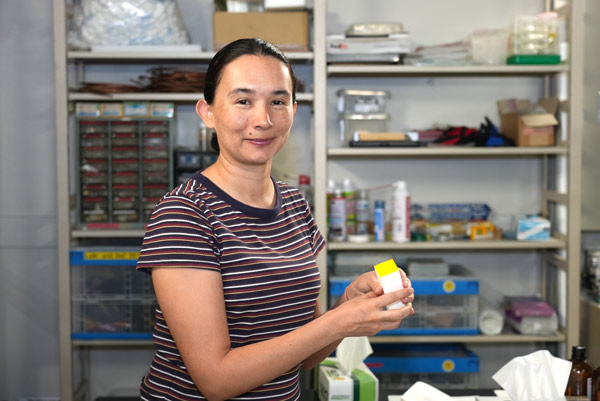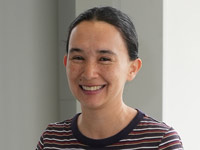Aug. 8, 2024
Detecting energy from exotic nuclei
Martha Liliana Cortes Sua, Special Postdoctoral Researcher
Describe your role at RIKEN.
I study the nuclear structure and shell evolution of exotic isotopes, which are usually produced in a laboratory. The protons and neutrons forming the nuclei of these rare isotopes are arranged in different shells. I investigate how energy levels and shells change when neutrons are added or removed from the isotopes, and I look at the gamma radiation that is emitted by nuclei when excited. Understanding why and how this happens helps us to understand fundamental nuclear force.
Please describe your research.
At the RIKEN Nishina Center for Accelerator-Based Science in Wako, Saitama, I lead the testing and development of a new gamma-ray detector, which uses a recently developed scintillator material. The new detector will have a faster detection time and a better energy resolution than current detectors.
What excites you the most about your research?
The new gamma-ray detector will allow us to measure properties such as excited states and transition probabilities in isotopes that are currently considered very hard to experiment on, because they are so short lived. By measuring such properties, we will be able to understand the nuclear forces at work within the isotopes, the origin of nuclear deformation, and the interactions between nucleons inside the nucleus.
What interests you about your field?
During my undergraduate degree in my country of origin, Colombia, I became fascinated by the possibility of creating exotic isotopes, so I joined a nuclear physics group. Since then, I’ve always really enjoyed working on instrumentation related to the discovery of the properties of radioactive isotopes.

How did you come to join RIKEN?
I first started working at RIKEN in 2016 while on a scholarship from the Japanese Society for the Promotion of Science (JSPS). On that occasion I stayed for two years and then moved to Europe to pursue further research. However, isotopes at the limits of existence can be better studied at RIKEN, so I submitted a research proposal and came back in 2022 as a Special Postdoctoral Researcher.
How has being at RIKEN helped your research?
The Radioactive Isotope Beam Factory at the RIKEN Nishina Center can produce some of the most exotic isotopes in the world. It is one of the few locations where cutting-edge research on nuclear structures can be performed.
What are some of the technologies that you use?
The Superconducting Ring Cyclotron (SRC) at the RIKEN Nishina Center produces some of the rarest isotopes that exist. We also use some of the latest developments in readout electronics, such as fast digitizers.
What do you wish you had known before you came to Japan?
I wish I had learned the Japanese written system for English words, katakana, before arriving. Most Japanese textbooks start by using the more traditional writing system, hiragana, but as a foreigner, reading English words in katakana is very useful.
Rate this article

